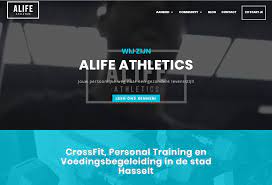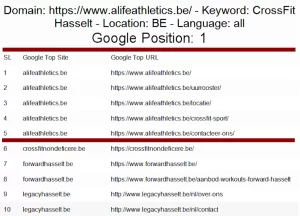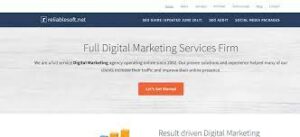SEO friendly home page is crucial for a good position in SERP and therefore for good organic traffic on the site.
The homepage is one of the most important pages and must be customized for users and search engines.
When potential customers visit the homepage of your store or presentation, they must at a glance and unequivocally understand what that site actually serves.
- Who are you
- What you sell or what you offer
- Why buy from you
- How to find products or services that interest them
- What sells best
On the other hand, when the search engine spider indexes the homepage, it should be able to easily retrieve information about you: your address (if you have a local business) and product information.
Why is the homepage so important?
For websites and e-commerce pages, the homepage is the most visited page, even if it is not set up as a landing page for PPC campaigns.
- It is a page that connects people to your texts, service,s or products.
- This is a page that users will visit to decide whether or not they trust your offer
- This site represents your domain in SERP and it will become stronger over time (and gain a higher ranking) as your website grows.
- This is a page that people will revisit to see if you have new products or offers.
How to optimize your homepage for users.
Let’s start with the last one, customer optimization.
As mentioned above, you must provide the user who visits your homepage with information about your company, its products, and services or services.
To achieve this, you must pay particular attention to the design and structure of the homepage so that it includes all the essentials.
Contents Above Fold Line (Break Line)
The first item on the list is content optimization above the Fold line.
What do we mean by ‘Fold line’? This is content that is visible to the user without having to scroll the page (use the side slider).
In other words, all that is seen when the homepage is fully loaded, what does the user see before touching the vertical scrollbars … It’s above the fold line.
So, the most important thing is to create textual content that, with its first impression on the user, will result in staying on the page and reviewing the products or services on it.
If you have the wrong content above the fold line, you are likely to lose most of your customers.
What content do you need above the Fold line?
These are the essential elements:
- Website logo.
- Contact information (phone, address, social networks but not an e-mail address).
- Menu options (Menu options should be based on keyword research results and the menu structure should fit the structure of your store or business page.)
- Offers or promotions
- Big title with the most important keyword implemented (H1)
- About 300 characters of text with an unambiguous description of the purpose of your web page (keywords included in the text)
- Search box (if applicable)
- Call to Action Button (Buy Now, Contact Us, Send Inquiry, etc.)
- Links to the basket or link for logging in and registering an account.
The best way to understand these principles is to sample some of the well-optimized e-commerce websites on the Internet and some websites that sell services and see how they are put into practice.
Although each of the websites displayed is in a different niche and has different marketing goals, when it comes to homepage optimization, they are based on the same principles.
Examples
* Fold line is in relation to the desktop version.
Example 1: https://www.alifeathletics.be/
SEO Friendly Home Page – Alife Athletics




The first page I show is from a niche service, and 5 keywords are in the Top5 Google searches.
When you visit the homepage, you will notice that the area well above the fold line is well used.
In addition to having a logo, this site has a call to action (interview) button, it also has a prominent button in the “Meet us” menu to get users’ attention from the moment they “land” on their homepage. The title of the page and the textual content clearly define the services being offered and where they are offered, which are also the main keywords.
Example 2: https://l.macys.com
SEO Friendly Home Page – l.macys


The homepage is different from the others, it has the same characteristics as described above.
Example 3: www.reliablesoft.net
SEO Friendly Home Page – Reliablesoft


If you sell digital marketing services (like us), you can explain in a few words who you are and what you do with your homepage, and then explain with a clear “Call to action” what services you offer.
Specific content guidelines for the rest of the page
From an SEO perspective, a website should have at least 300 words of textual content.
Your homepage, every other page, product, or post must be optimized for the keywords and terms you want a good page rank for on Google. This means that you will need enough text on the page to naturally enter your keywords and search engines find and index that content.
However, this does not mean that you need to pack 300+ words of content and fill them with keywords – far from it! It is important to consider how much information your target customers need right on your homepage and where that text is located. It is important that this text is informative and useful to the customer.
There are several arguably more important factors to consider when it comes to how much text you should have on your homepage. These include your target audience, your brand and style, your homepage goal (that is: what you want people to do after first visiting your homepage), and what you sell.
What text is required on my homepage?
Now we know how much content to use, it’s time to look at the content itself. If someone is visiting your site for the first time, they need to know who you are, what you offer, and what makes you special. Why choose you and your services?
Let’s look at what we need and how we can break it down into smaller units.
Title: Short, specific, and compelling, approximately 4-8 words (about 70 characters).
Short Description: An unambiguous description of what you do or offer (and where, if the business is local). Make the description short and effective so people know what it is about right away. About 30 – 100 words.
Product or service description: A brief summary of the main product or service categories. Turning on this ensures, that people know exactly what is on offer. About 30 words per product or service.
Call to Action: Tell the buyer what he can do, with the title and short text. 30-50 words should be enough.
Comments: They need to show what others think of your service. People like to read reviews and often base their decisions on them. Choose one or two of the best reviews. No more than 100 words.
Resources: You can direct customers who are not yet ready to buy specific products to additional informational resources, such as blogs. 50 words should be enough to introduce them.
Depending on your business, the specifics of what you do, the homepage will vary but this information will usually bring your homepage between 100 and 400 words. Decide which information will be useful and which will not. Be ruthless and remember that good website content is the most important factor.
SEO Friendly Home Page – Some Important Tips!
- Text content must be textual, images of text and titles cannot be indexed.
- Font size and color should be comfortable and easy to read.
- Do not hide text in the background color or reduce it to invisibility. Google will consider this a “Black Hat” and penalize your website.
• Some developers use Google Translate for the multilingual effect. This is a mistake if you want SEO for multiple languages because optimization for online translated pages cannot be done. It is best to create separate pages for each language.
